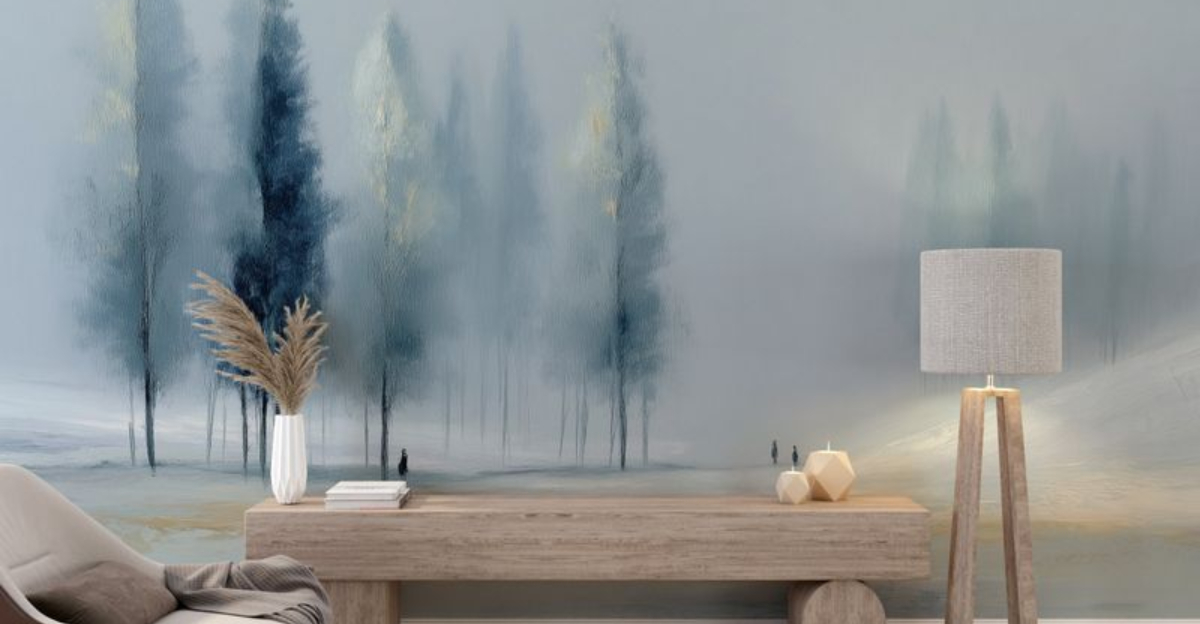Hand-painted murals have adorned walls for centuries, creating magical spaces that tell stories and captivate imaginations. Recently, this ancient art form has been making a stylish comeback in contemporary homes and businesses.
Looking to transform your blank walls into conversation pieces? Here are twenty fresh approaches to reviving the mural tradition with a modern twist.
1. Abstract Color Fields
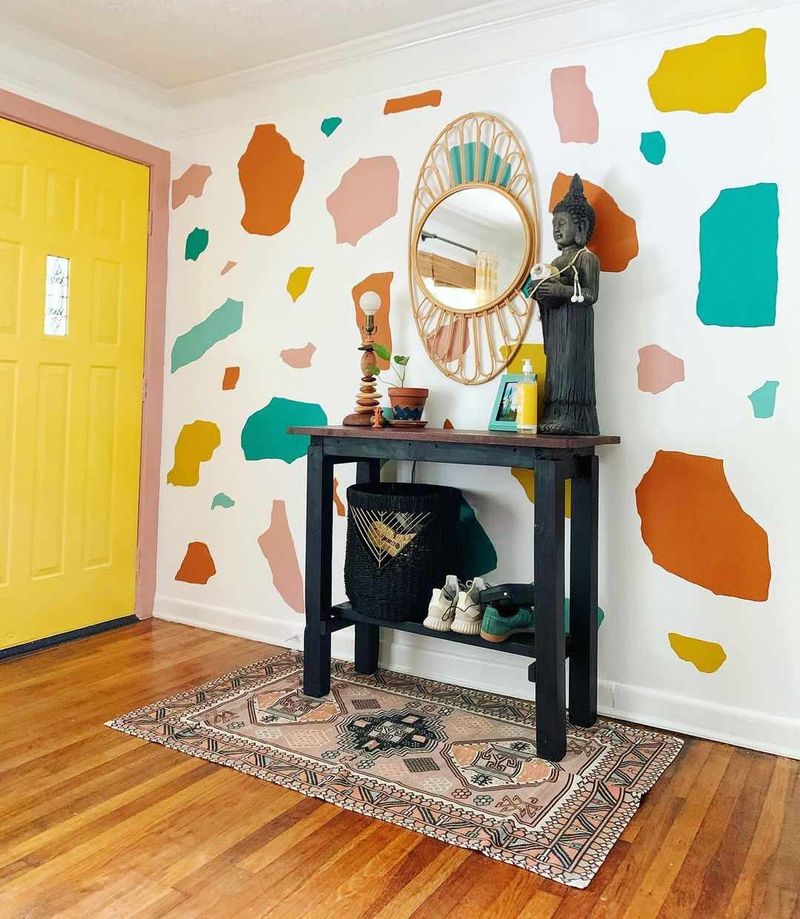
Splashes of vibrant color without defined shapes create an emotional impact in any room.
By focusing on how colors interact rather than precise imagery, you’ll achieve a sophisticated look that complements modern furniture.
Consider selecting shades that complement your existing décor while adding unexpected pops of contrasting tones for visual interest.
2. Oversized Botanical Forms
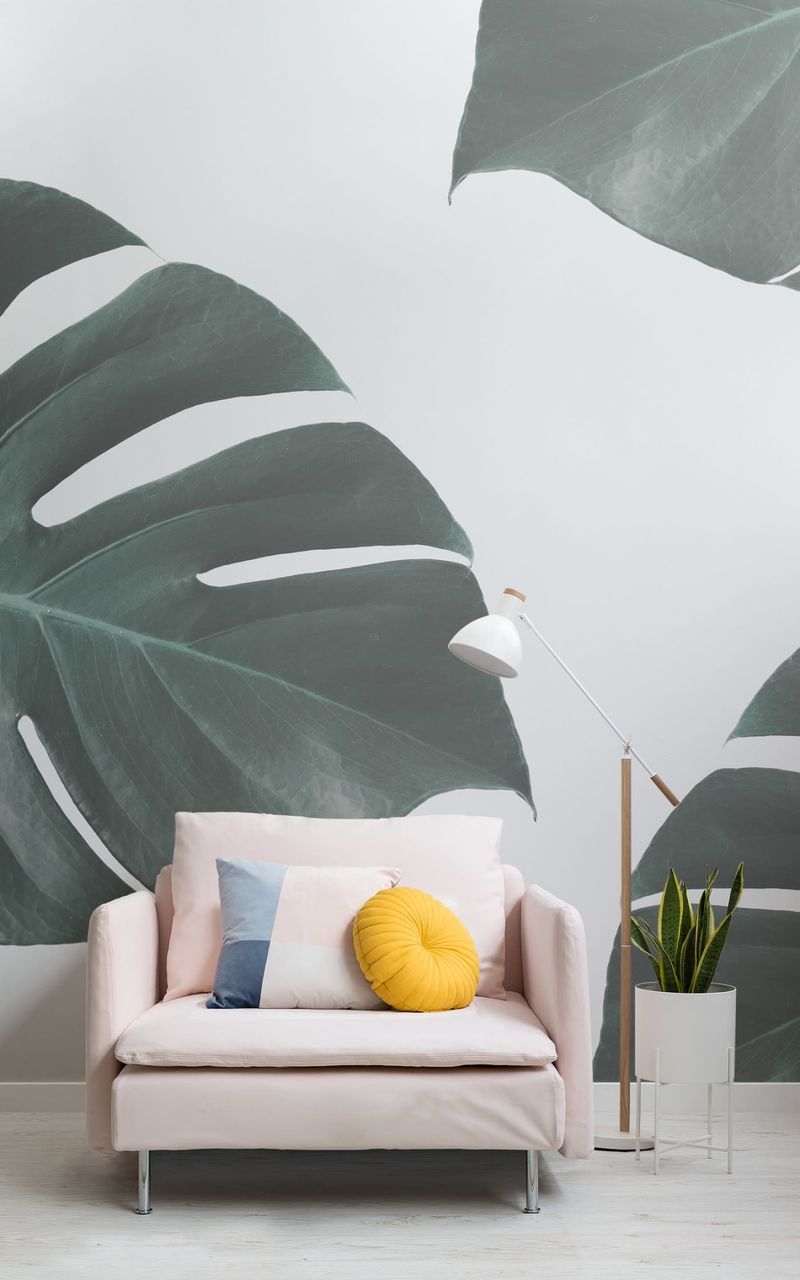
Magnified leaves and flowers create dramatic focal points without feeling overly traditional.
Unlike detailed botanical illustrations, these simplified, larger-than-life natural forms make bold statements while maintaining modern appeal.
Look to monstera leaves, bird of paradise flowers, or eucalyptus branches as inspiration for shapes that work beautifully at grand scale.
3. Muted Monochrome Landscapes
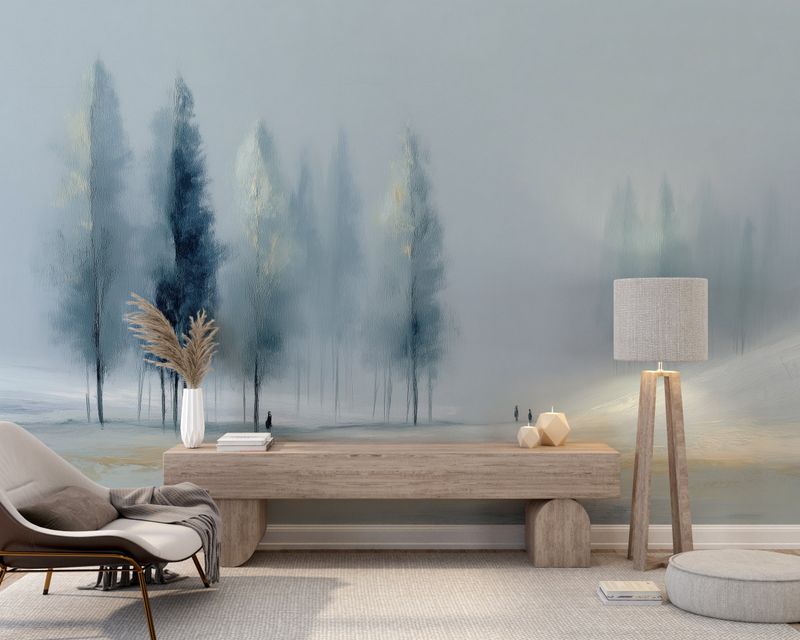
Working with variations of one color creates sophisticated dimension while maintaining a calm atmosphere perfect for bedrooms or meditation spaces.
Mountain ranges, rolling hills, or ocean horizons translated into gentle tonal variations offer restful visual interest that won’t compete with other design elements.
4. Line Art Silhouettes
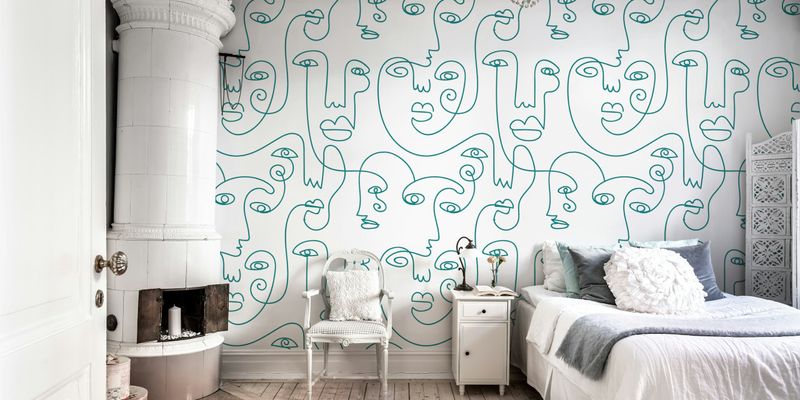
Inspired by artists like Picasso and Matisse, this approach uses minimalist strokes to suggest form rather than detail.
Focus on fluid movement with your brush, allowing imperfections to add character—remember, slight wobbles in your lines actually enhance the handmade charm!
5. Geometric Layering
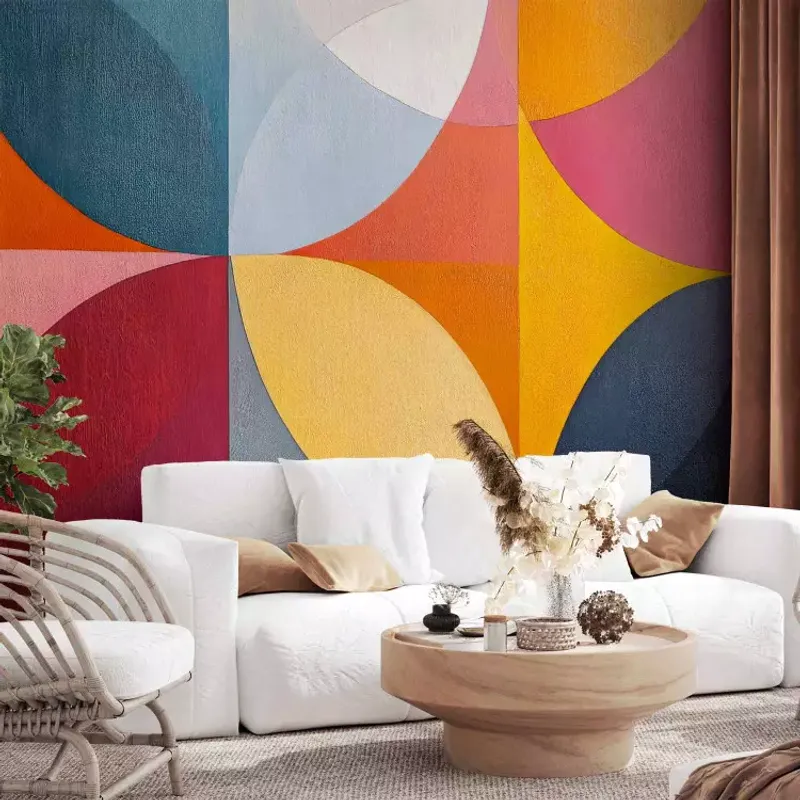
Overlapping shapes in complementary colors create dimensional interest with contemporary appeal.
Start with larger forms in lighter shades, then build complexity by adding smaller, darker elements on top.
Play with transparency effects by slightly watering down certain paint colors, allowing underlying shapes to show through for a sophisticated, multi-layered result.
6. Tonal Archways

Painted arches create architectural interest without renovation costs or structural changes.
By using subtle gradients within each arch, you’ll add sophisticated depth that catches light beautifully throughout the day.
Experiment with placing furniture partially within these painted elements to blur the line between real and imagined architecture.
7. Soft Gradient Washes
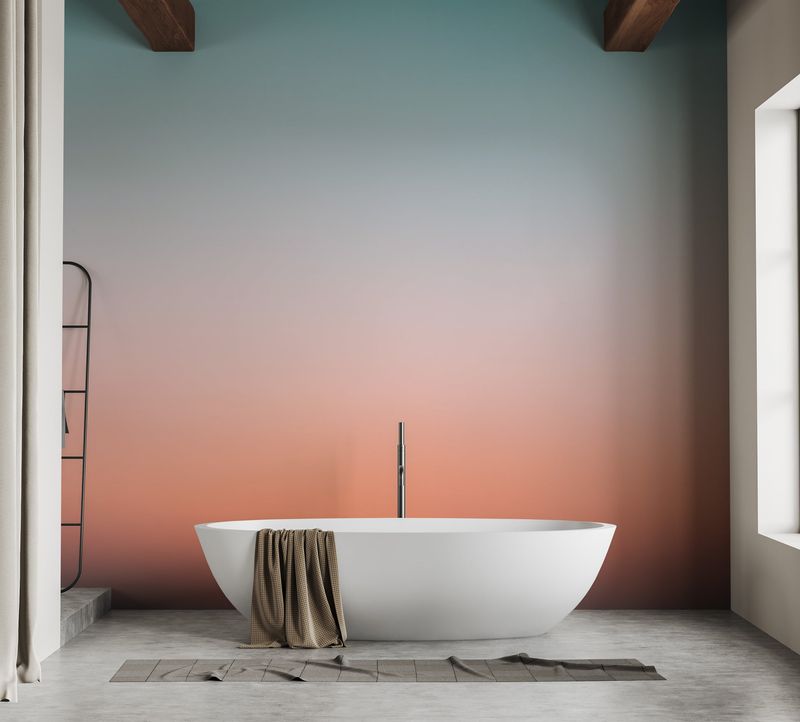
Gently blended color transitions evoke sunrise skies or ocean horizons without being literal.
Gradient washes create an ethereal mood that shifts subtly as light changes throughout the day.
For best results, work quickly with slightly damp walls to achieve seamless blending between colors, moving from lighter to darker tones.
8. Minimalist Mountain Ranges

Simplified mountain silhouettes bring natural elements inside without overwhelming the space.
These abstracted forms create a sense of horizon and perspective using just a few essential lines.
Keep colors subtle—think charcoals, navy blues, or forest greens—to maintain sophisticated appeal while adding depth to otherwise flat walls.
9. Modern Chinoiserie
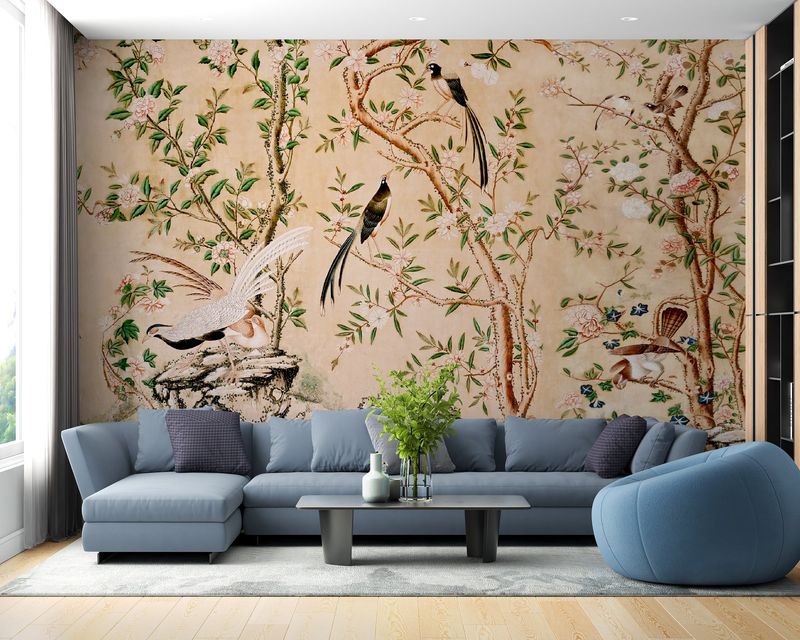
Reimagined Asian-inspired motifs in unexpected color palettes offer a fresh take on traditional patterns.
Swap traditional blues for modern teals or blush pinks, and incorporate simplified bird and branch motifs against negative space.
Focus on creating asymmetrical compositions that feel intentionally unfinished, allowing breathing room between elements for a contemporary interpretation of this classic style.
10. Single-Line Faces
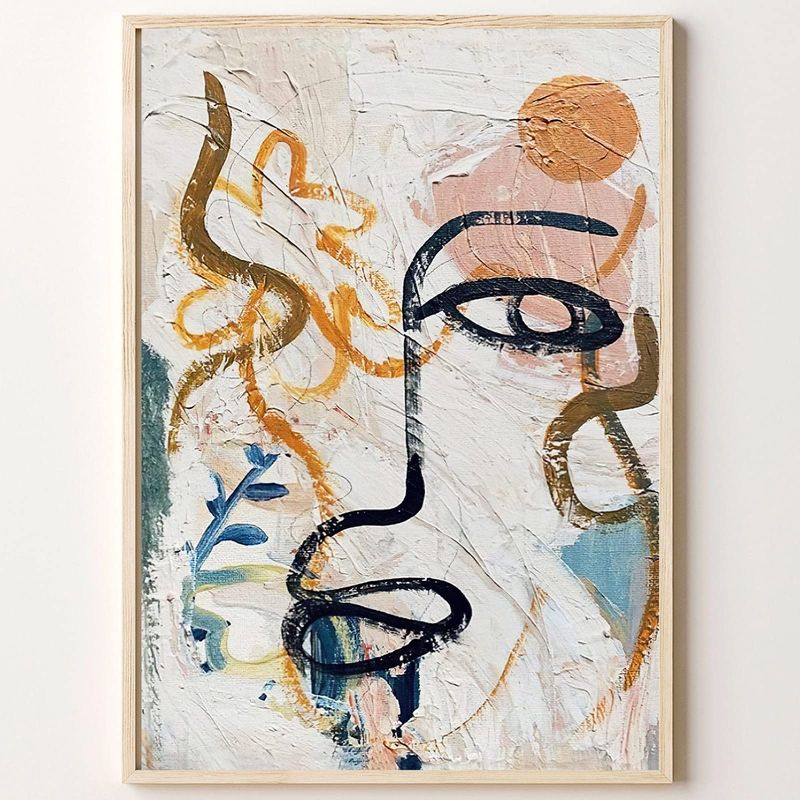
Faces drawn without lifting the brush create intriguing, artistic focal points with minimal effort.
Drawing inspiration from artists like Jean Cocteau, this technique emphasizes expression through economy of line.
Keep your hand loose and embrace imperfections—the slightly wobbly, continuous line quality is exactly what gives these murals their artisanal charm and prevents them from looking mass-produced.
11. Celestial Motifs

Moon phases, stars and planets bring cosmic energy to bedrooms or meditation spaces.
Rather than literal space scenes, focus on simplified celestial shapes in metallic paints against dark backgrounds.
Mix gold, silver, and copper accents for dimension, and consider adding subtle glow-in-the-dark elements for an enchanting nighttime surprise that transforms the room after dark.
12. Trompe-l’œil Architecture
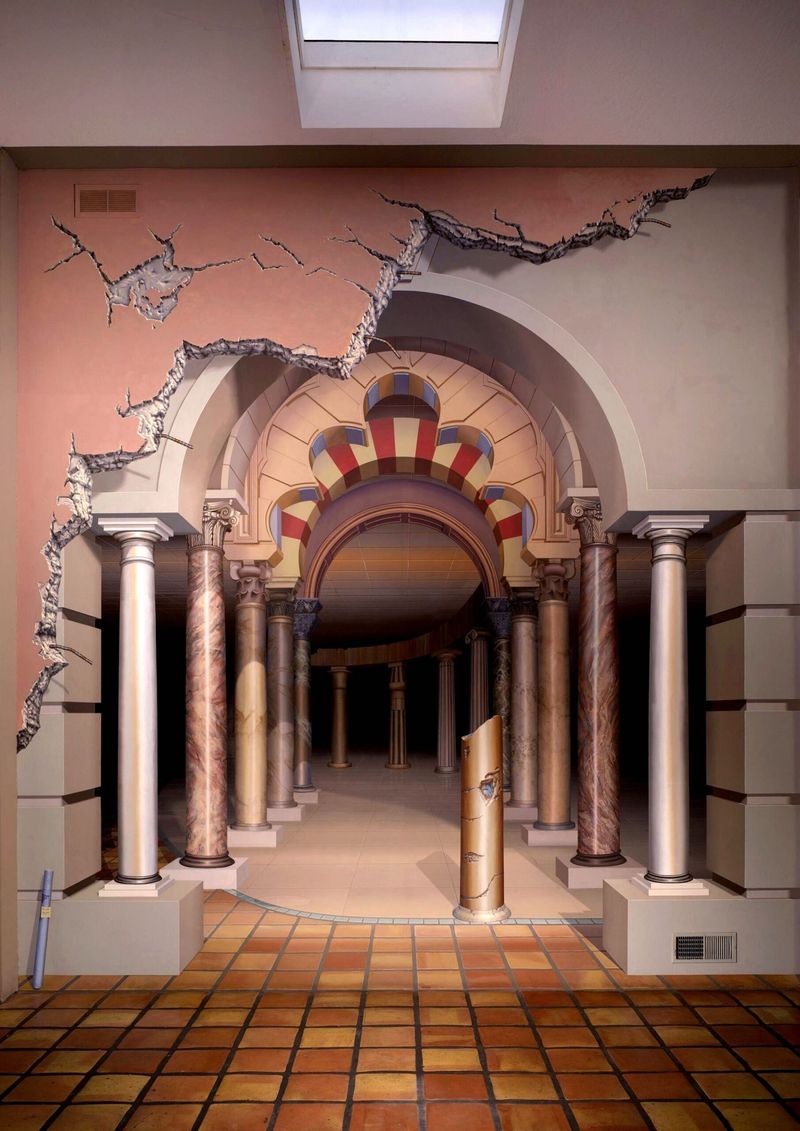
Painted architectural elements like faux windows or shelving create visual interest through artistic illusion.
Unlike traditional trompe-l’œil that aims for photorealism, modern versions play with slightly abstract interpretations that acknowledge their painted nature.
Consider painting shadow effects that change throughout the day as natural light shifts, enhancing the dimensional illusion without trying to completely fool the eye.
13. Watercolor Blends
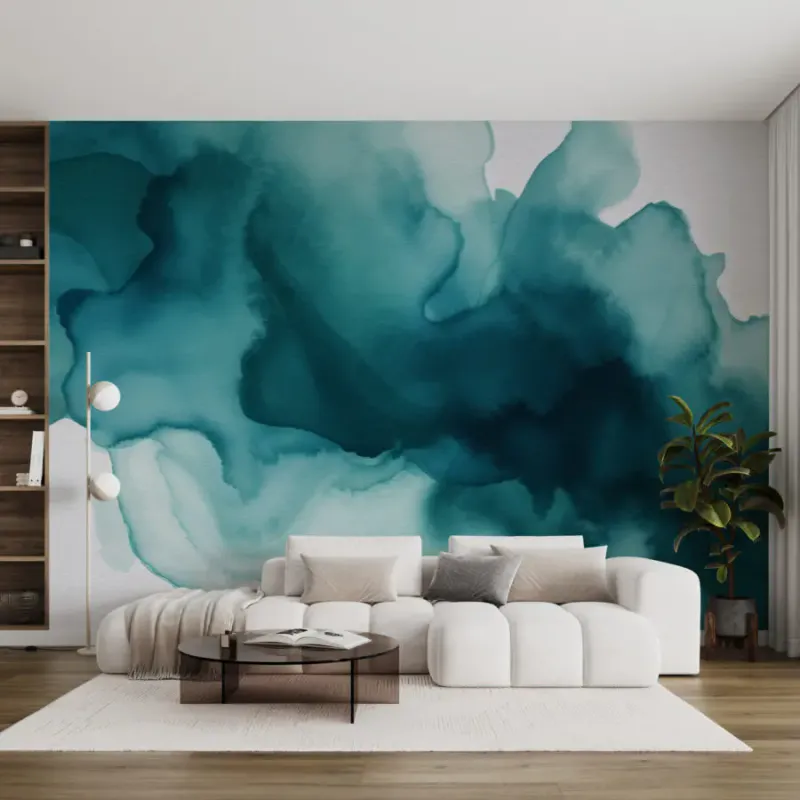
Flowing, blended pigments mimic watercolor techniques but at dramatic wall scale.
Start with a dampened surface to allow colors to bloom naturally into each other, creating organic boundaries between hues.
Embrace the unpredictable nature of how pigments interact when wet—the slightly uncontrolled bleeding edges are precisely what gives this technique its artistic, handmade quality.
14. Vintage-Inspired Typography
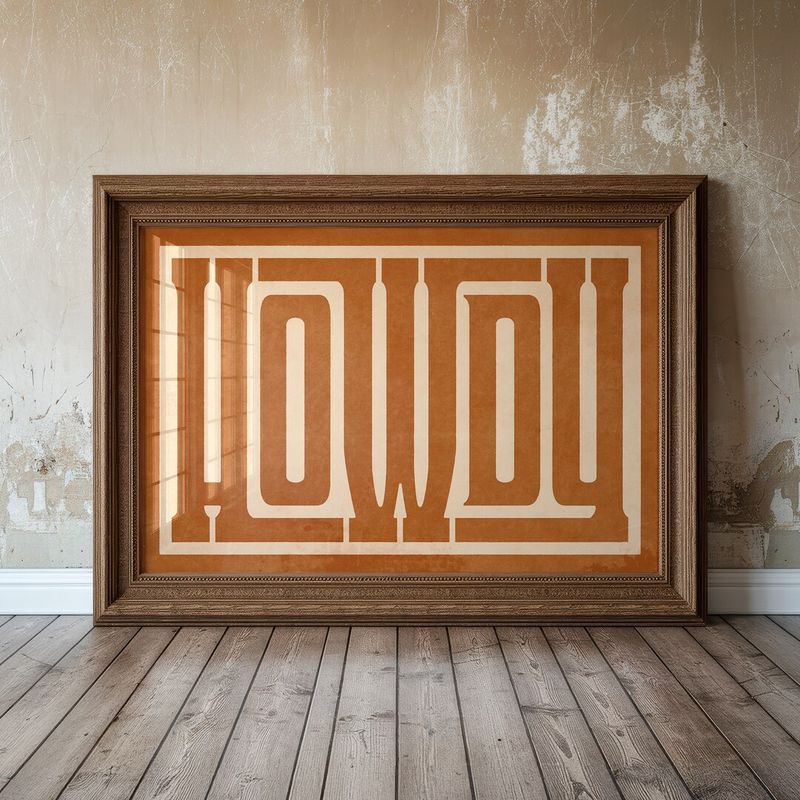
Hand-lettered quotes or single words add personality while functioning as graphic art elements.
Choose meaningful phrases rendered in imperfect, clearly hand-painted letterforms rather than perfect computer fonts.
Keep the color palette limited—black on white or white on color—and embrace the slight wobbles and inconsistencies that reveal the human touch behind the letters.
15. Mural Meets Gallery Wall Combo
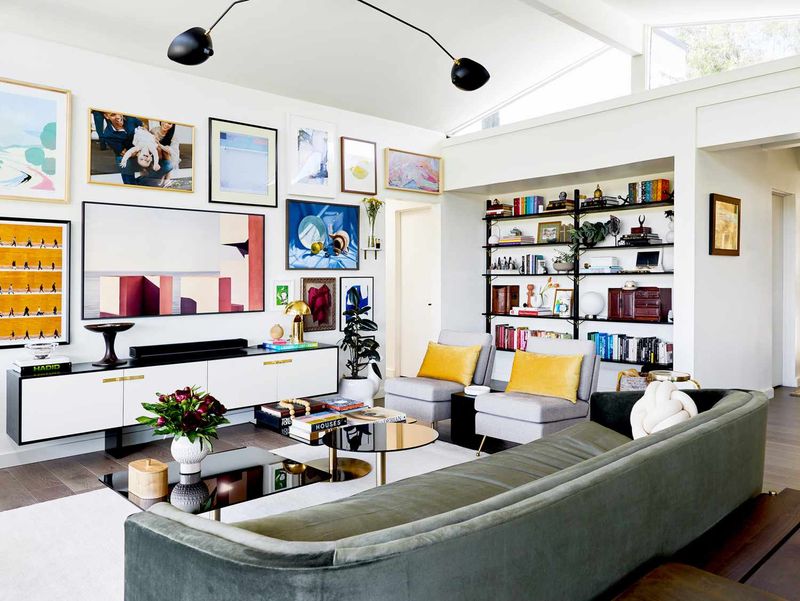
Painted elements that interact with framed artwork create an integrated, layered look.
Start with simple painted shapes or lines that extend beyond and between your framed pieces, visually connecting them.
Consider using subtle colors that complement rather than compete with your art collection, allowing the painted elements to serve as sophisticated connective tissue between your existing pieces.
16. Negative Space Florals
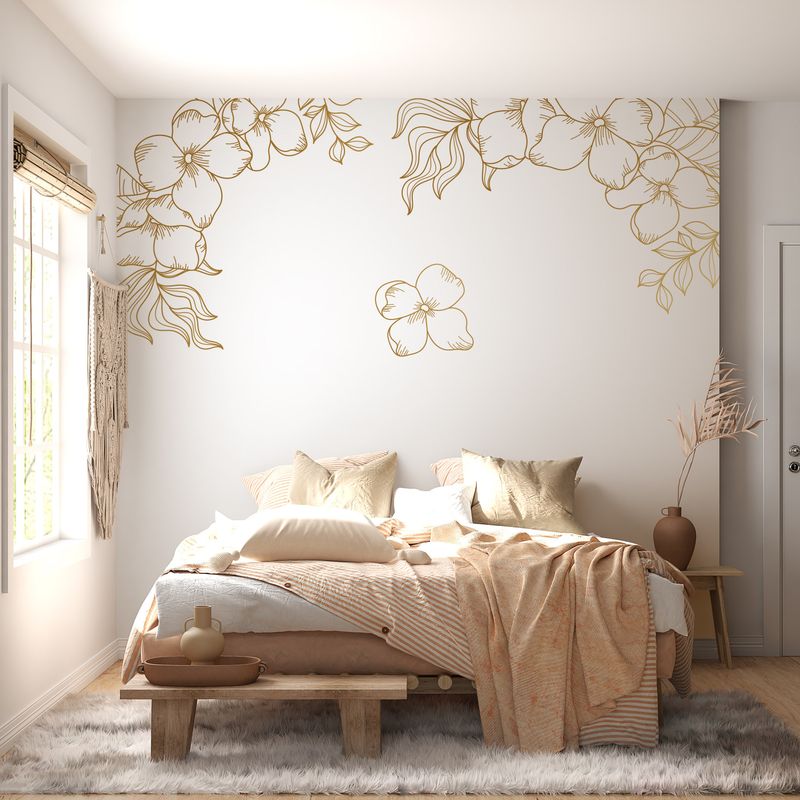
Outlined flowers with unpainted centers create airy, sophisticated botanical features.
Instead of filling in petals completely, focus on defining just the edges of each bloom, allowing the wall color to become part of the design.
Vary the size and density of your floral elements, clustering them in certain areas while leaving breathing room in others for a contemporary composition that avoids feeling too uniform.
17. Room-Wrapping Scenes
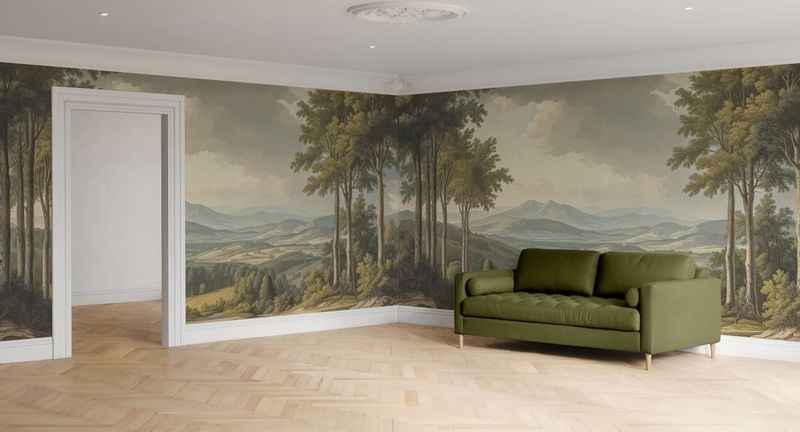
Panoramic murals that extend across multiple walls create immersive environments rather than just accent features.
Traditional murals often stick to one wall—this approach surrounds the entire room, creating an immersive, unified experience that feels like stepping into a story.
Keep the horizon line consistent as your design wraps corners, and consider how furniture placement will interact with different elements of your continuous scene.
18. Muted Urban Skylines
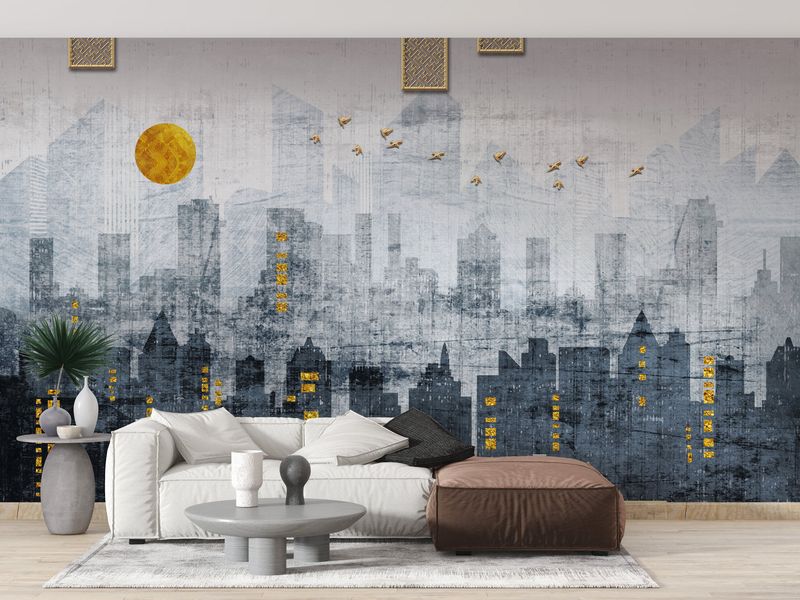
Simplified city silhouettes in tonal colors bring sophisticated urban energy without overwhelming the space.
Rather than detailed architectural renderings, focus on the essential shapes that make skylines recognizable.
Keep your palette subdued with grays, blues, or sepia tones for a sophisticated look that references urban environments without becoming the room’s only focal point.
19. Playful Kids’ Room Creatures
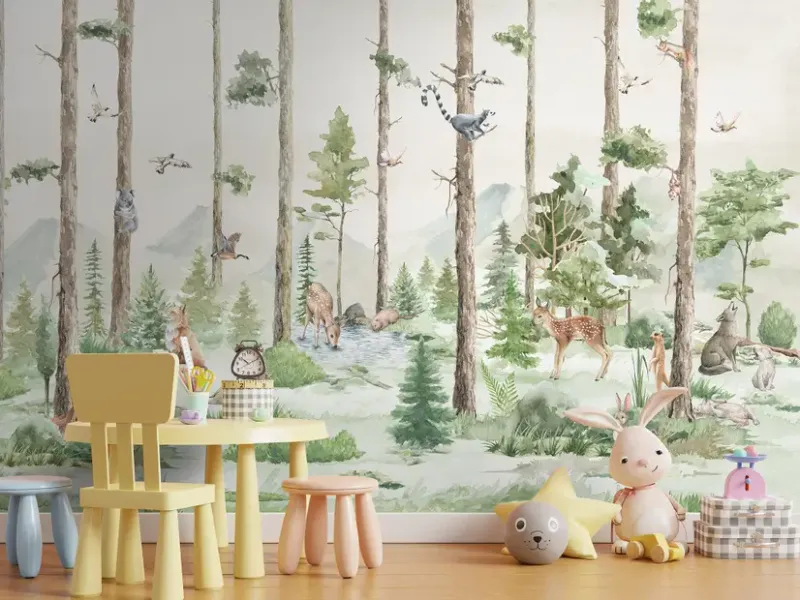
Whimsical animals or characters painted at child-height create magical spaces without commercial character themes.
Hand-painted creatures have personality and charm that mass-produced decals can’t match.
Consider creating interactive elements—a painted tree with hooks for hanging real toys, or creatures with chalkboard elements that kids can customize and change over time.
20. Pastel Deco Patterns

Geometric Art Deco motifs in contemporary pastel colors update a classic design style.
Swap traditional gold and black for mint greens, blush pinks, and pale blues while maintaining the characteristic symmetry and repeating patterns.
Keep some elements of the pattern slightly imperfect to emphasize the handmade quality—perfectly straight lines and identical repeats would lose the artisanal charm that makes hand-painted murals special.

